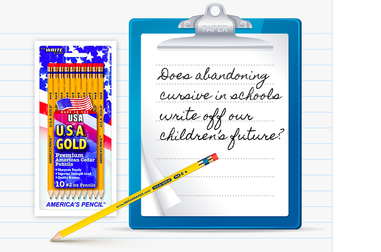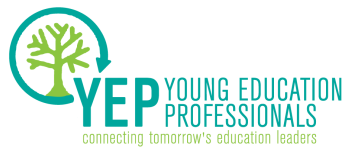 Photo courtesy of MEGA Brands America.
Photo courtesy of MEGA Brands America. Ineffable cultural value. Pluralism. Underappreciated practical relevance. Do these arguments sound familiar? If you’re like me they seem to oddly echo the arguments of those lamenting what they perceive to be the death of a broad, liberal arts curriculum in our schools, due in large part to standardized testing. They are often the same sorts of arguments put forward in favor of the new Common Core State Standards, which famously put a heavy emphasis back on the liberal arts. What strikes me about these arguments, though, is not that they are wrong; there really is an ineffable value to the liberal arts, and accounting for the pluralistic nature of students’ inherent skills and tastes really is important.
But these arguments leave out the most powerful arguments in favor of both cursive and the Common Core. First, despite their slow deaths, cursive and the liberal arts maintain a vital role in society as potent signals of education level. My favorite teacher in high school used to tell us, when we asked her why Shakespeare was important, “It’s for the backs of bars, dears.” If you want to impress people, she said, especially in those informal social situations where we most often want to impress people, then you had to be able to talk intelligently about Shakespeare and other such arbitrary markers of intelligence. The still-potent signaling power of cursive was brought into stark relief recently when Rachel Jeantel’s competence as a witness in the Trayvon Martin trial, was linked to her inability to read the cursive writing of a document presented to her. Though they are arbitrary and linked in unsettling ways to the distribution of power in society, there are many signals of education level and intelligence, and to ignore their importance is to ignore the relevance of the social mobility of students without access to such signals.
But the case for the liberal arts and the Common Core isn’t just limited to its signaling value; there is a strong case to make on practicality grounds as well, but many undersell it by focusing on the practical value of the content knowledge gained rather than the skills developed. Here again the analogue of cursive is useful. The practical value of learning cursive doesn’t come from knowing the specific shapes of the letters; it comes from the concentration practiced in the learning process. Precisely because cursive is a bit complicated and foreign to us, we have to concentrate in order learn it and we have to practice a lot. But this process accidentally produces a lot of good. The concentration we develop in the learning process is hugely beneficial, as is the experience of mastering the skill through practice. These are invaluable learning skills that promote depth of thought and self-efficacy. A similar case can be made for the liberal and plastic arts. And in the case of the study of humanities, it comes with the added benefit of developing students’ analytical skills. It’s not so important that we know that Lady Macbeth is driven insane by a desire to rid herself of imagined blood stains, for example, but it is crucial that we learn how to analyze why she is.
Ultimately, if one gets caught up in the superficial nostalgia that so often guides our arguments over the value of the liberal arts and the Common Core, one loses sight of the vital role that these subjects play in a strong education.
CJ Libassi, a former teacher, is an intern through Leadership for Educational Equity in the education policy program at the New America Foundation. He can be reached at clibassi(at)hotmail(dot)com or on Twitter (at)clibassi.

 RSS Feed
RSS Feed